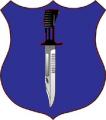Fuchs,
I recall the UK only now considers such issues when "cuts" arrive or a defence review before "cuts".
There have been many comments on how top heavy the UK military are; the latest being this:http://www.timesonline.co.uk/tol/new...cle6969921.ece
Which cited:The issue has re-appeared on KoW as a cut will end a prized think tank:http://kingsofwar.org.uk/2010/03/mod...nose/#commentsThe Army is weighed down with top brass, according to figures showing that the number of generals and brigadiers has risen since Labour came to power in 1997.
Although the size of the trained Army has shrunk to about 100,000 soldiers, there are now 255 members with the rank of brigadier or above — or one for every 400 service personnel.
I have asked before how will we, the UK & USA, deploy truly 'light' and particularly when far inland or with no friends nearby.
As for:Our history shows I fear that this only occurs after a defeat and when some insiders realise change is needed, e.g. after Dunkirk.You need to shake them badly in order to keep the wastage in check.








 ). We see a lot of that outside of the military as well, just replace Fuchs’ ‘armies’ with ‘bureaucracies’, and ‘huge bureaucracies’ with ‘self-expanding’:
). We see a lot of that outside of the military as well, just replace Fuchs’ ‘armies’ with ‘bureaucracies’, and ‘huge bureaucracies’ with ‘self-expanding’: 






Bookmarks